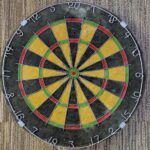When you “build” your target audience by identifying your customer demographics and figuring out which tools will best attract them, buyers will come.
You should focus on the ideal customer for your business rather than targeting everyone. Many small business owners make the mistake of thinking that their product or service is right for everyone. For example, targeting Facebook Ads to “all” (genders, ages, etc.) when your product is clearly for women over forty doesn’t make much sense. Not only is advertising to everyone rarely valid, but it can actually hurt your marketing efforts by annoying people and wasting your advertising budget unnecessarily.
Follow these steps when identifying your target audience:
1) Determine your customer demographics. Unless you’re selling oxygen, not everyone needs your product or service. So who does? Men or women? What age range? What is their economic bracket and education level? What are their personal interests? Once you’ve narrowed down these criteria, it’s a lot easier to focus your marketing strategy on those who are most likely to need and therefore purchase what you are offering.
2) Determine your customer’s needs. Now that you have a clear idea about the type of person you’ll be targeting, you’ll have to identify their specific needs in the context of what your business is offering. In other words, what is the problem they are having that your product or service provides the solution? By putting yourself in their shoes and asking the questions they will have, you’ll be able to address their concerns with your answer—your marketing message—before they occur.
3) Determine how your customer will learn about you. We all have friends who prefer texting to calling, so we know that not everyone is receptive to the same modes of communication. Is your ideal customer older? Then you may want to run print ads. If your market demographics are Millennials who have never even read a newspaper, then you may want to run Twitter or Instagram ads. Is your audience local or global? The best way to reach your target audience is via the channels where they already receive their information.
4) Assume your customers are mobile. These days more and more people are connecting with the world through their mobile devices, whether it’s to read news, shop or communicate. In fact, tech analyst Mary Meeker found that smartphones are outdistancing all other devices, especially the desktop or laptop computer, for Internet use. Of the 2.8 billion Internet users worldwide, 2.1 billion are mobile, a 23 percent increase from last year. So however you decide to reach your target audience, make sure your methods include mobile advertising.

How to Choose the Right Target Market for Your Small Business
As a small business owner, you probably have a general idea who makes up your customer base, but vague ideas aren’t enough in today’s competitive marketplace. Without delving into the demographic details, you’re basically marketing to anyone and everyone, and this “strategy” could mean wasting your advertising budget and missing opportunities to increase sales.
The Difference Between a Target Audience and a Target Market
Think of it this way – your target market is the group of people who could benefit most from your product or service.
Target marketing aims to connect with a group of consumers most likely to purchase what you have to offer based on demographics, past buying history, and other data.
The Paradox of Narrowing Your Target Market
If you send your partner out to the grocery store to simply buy food, he or she might come back with loads of bags filled with things you don’t need or won’t eat. This is obviously a waste of time and money. But if you send your spouse with a specific list of ingredients, he or she will come back with the right groceries. No time or money will have been wasted, and you, the cook, will be able to do your job efficiently.
Being specific is also relevant in marketing. Many new business owners or entrepreneurs make the mistake of thinking that their product or service is great for everybody, but that’s just not so. Not to mention that marketing to senior citizens versus Millennials, for example, can change what language you use, where you advertise, and how you position your product. (How many grandparents know the term “on fleek” or are on Twitter?)
Defining your target market will allow you to concentrate your resources on the group or groups of people that are most likely to buy from you.
Gather Your Target Market Information
The first step is to gather data. You won’t be able to accurately choose the right market for your product without some basic research. Here’s how to get started:
Look at Your Site’s Analytics
Using Google Analytics, you’ll easily be able to discover your site visitors’ age group and gender, what other websites they came from, which keywords they typed into search engines to find you, and how much time they spent on your web pages.
Interview Customers
The easiest way to find out more about your target market, is to simply ask your customers about themselves. Do this in person, on the phone, through email, or via surveys and polls on your social media sites. If you have forms on your website, make sure to use specific mandatory fields such as age or company size or job title.
Ask Your Sales Reps
You can also receive a lot of this information from your sales team. Which leads are they closing deals with? What kinds of questions do they hear most often from potential customers?

Look at Your Competition
Take a look at your competitors’ websites, social media posts, and various forms of advertising. Who are they targeting? And, just as importantly, who are they not targeting that you should?
Develop Buyer Personas
Now that you’ve gathered the data, you can get even more clarity on your target market by creating 3 to 5 “buyer personas” for your small business. A buyer persona is simply a description of your ideal customer in as much relevant detail as possible, such as:
Age, gender, marital status, children, income, occupation, geographic location, hobbies, goals, challenges, how your product or service can help them, etc.
Use these criteria to create at least three profiles of your target customer. For example, if you own a baby clothing store, your demographic profile might be married women between 25 and 40 years of age who are pregnant. If you are a luxury store, your target customer’s income level will be higher. If you have a brick-and-mortar store, the geographic location might be within ten miles of your store.
Subscribe for more business, sales and investing posts. Have a lovely day.











